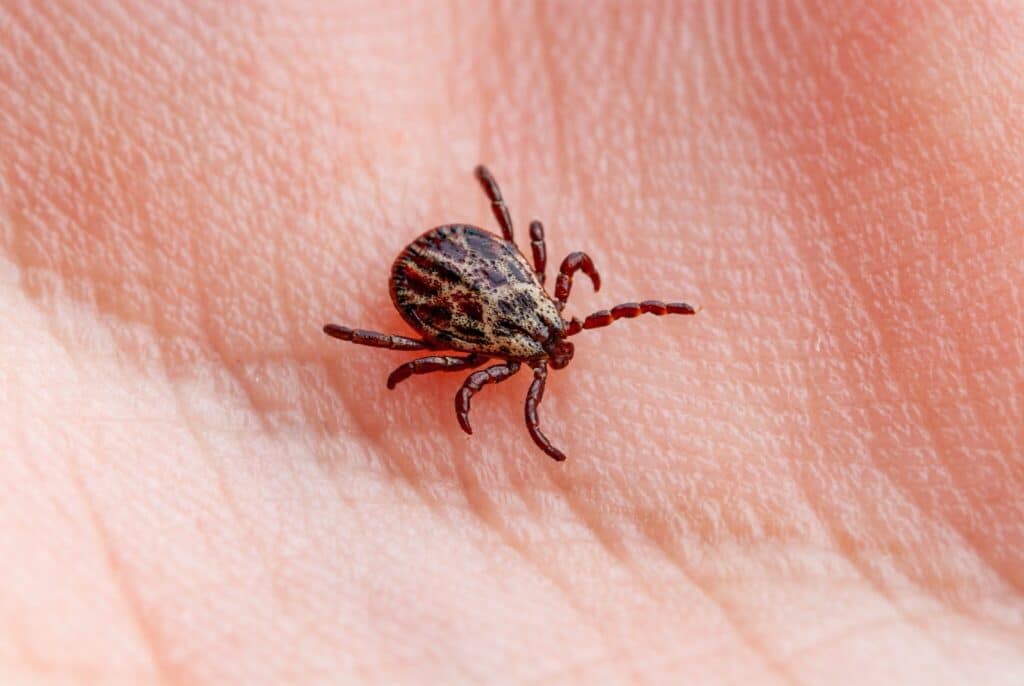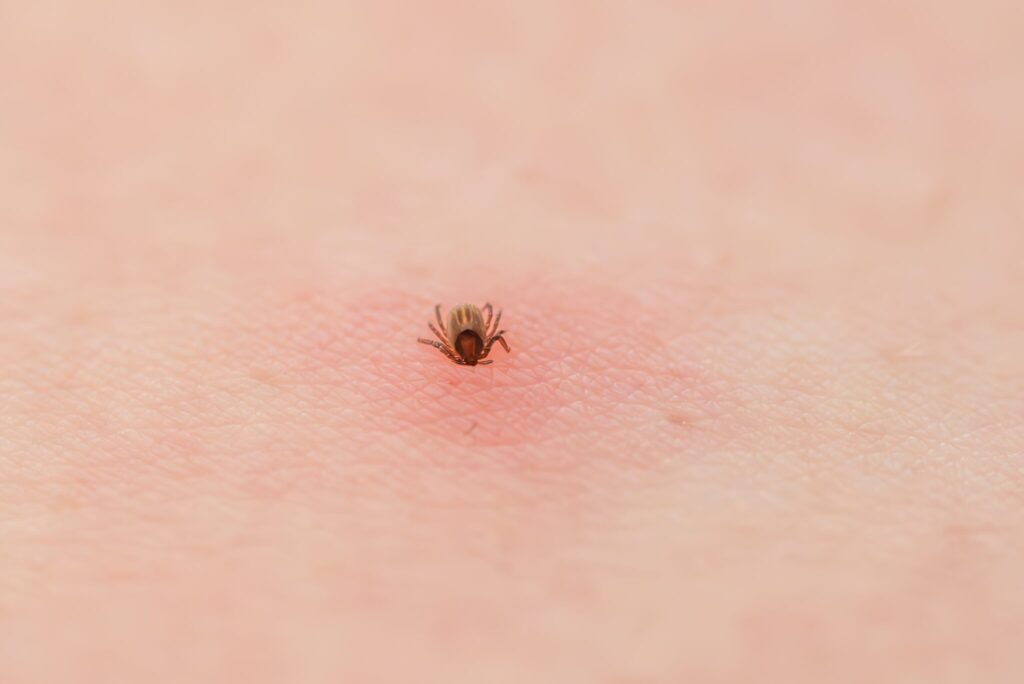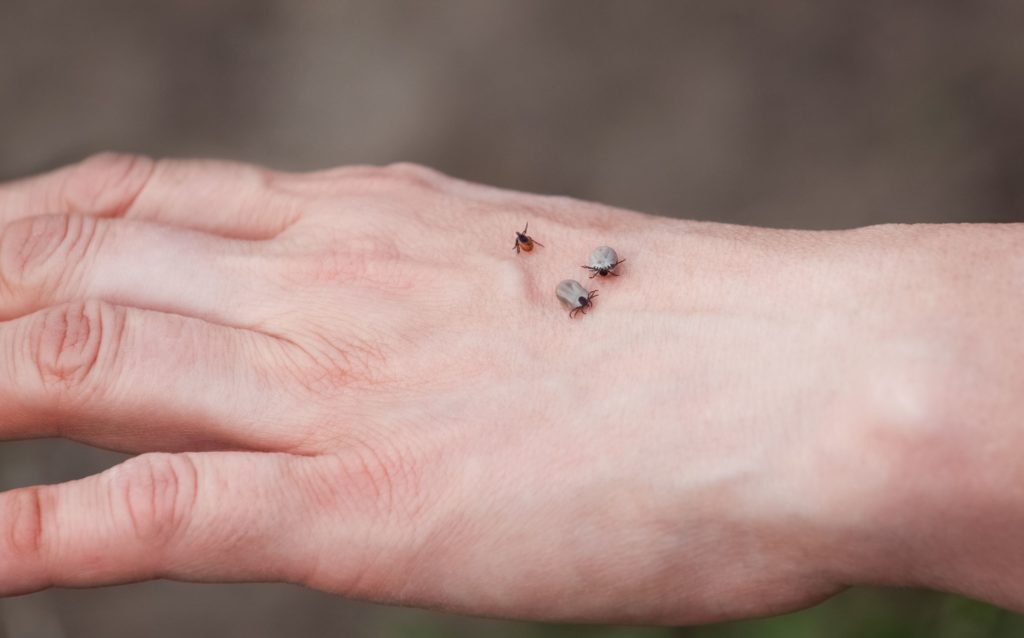Ticks, though small and seemingly harmless, can pose significant health risks. If you spend time outdoors, especially near wooded areas or fields, you are likely familiar with ticks and the dangers they bring. While a tick bite might appear to be a minor nuisance, it can lead to serious diseases such as Lyme disease, Rocky Mountain spotted fever, and babesiosis. It’s essential to take the proper steps not only to protect yourself from ticks but also to handle them appropriately if you find one.
Why Ticks Are Dangerous
Ticks are known to transmit various illnesses that can affect both humans and animals. Lyme disease, for example, is transmitted by the black-legged tick and can cause long-term effects, such as joint pain, fatigue, and neurological symptoms, if left untreated. Similarly, Rocky Mountain spotted fever can cause fever, headache, and in severe cases, damage to organs. These diseases, while treatable, often require early intervention for the best outcomes.
Understanding how to remove and dispose of a tick properly is critical for minimizing the risk of disease transmission. If you discover a tick on your skin or your pet, it’s essential to act quickly and correctly.

How to Safely Remove a Tick
When you find a tick attached to your skin, your first instinct might be to remove it quickly. However, it’s important to avoid using your fingers to pull it off, as this can squeeze the tick and release harmful bacteria into your bloodstream. Instead, use fine-tipped tweezers to safely remove the tick.
- Use Fine-Tipped Tweezers: Grasp the tick as close to your skin as possible. Avoid pinching the body of the tick to prevent squeezing any contents into your skin.
- Pull Gently and Steadily: Pull the tick straight out with smooth, even pressure. Do not twist or jerk it, as doing so can cause parts of the tick to break off and remain embedded in the skin.
- Dispose of the Tick Properly: Once the tick has been removed, place it in a sealed container or plastic bag for proper disposal.

Proper Disposal of a Tick
Ticks are remarkably resilient and can survive in a variety of environments, so simply tossing them in the trash is not always the safest option. The best ways to dispose of a tick include:
- Sealed Container or Plastic Bag: Place the tick in a small, sealed container or plastic bag. This ensures that the tick cannot escape or potentially reattach to another surface.
- Flush It Down the Toilet: You can also wrap the tick in tissue and flush it down the toilet. This ensures that it is safely disposed of and won’t harm anyone or anything else.
- Avoid Crushing It with Your Hands: Never crush a tick with your fingers. Doing so can expose you to harmful pathogens if the tick is carrying infectious agents.
Why You Should Keep the Tick
In some cases, it might be beneficial to keep the tick, especially if it came from your pet. Veterinarians may ask to identify the tick for testing to determine if it was carrying diseases like Lyme disease. Keeping the tick in a sealed container can assist your veterinarian in diagnosing potential health issues your pet may face as a result of the bite.

Regular Tick Checks for You and Your Pets
Ticks are most active in the spring and summer months, but many species are active year-round, even during colder weather. This means regular tick checks are essential, not only for yourself but for your pets as well. Ticks tend to latch onto areas that are hard to see or reach, such as the groin, armpits, and between the toes. For pets, pay special attention to areas around their ears and under their collars.
For humans, wearing long sleeves and pants while hiking or walking in wooded areas can reduce your risk of tick bites. If you’re in a high-risk area, using insect repellent and keeping to cleared trails is another preventive measure.

What to Do After a Tick Bite
If you’ve been bitten by a tick, it’s crucial to monitor your health in the following weeks. Early symptoms of tick-borne diseases may include:
- Fatigue
- Muscle aches
- Fever
- Flu-like symptoms
- Bullseye Rash: A red, circular rash that often appears around the bite site is commonly associated with Lyme disease.
If you experience any of these symptoms, it’s important to consult a healthcare provider immediately. Early treatment of tick-borne diseases is key to preventing long-term health problems.

Prevention and Awareness
While it’s impossible to eliminate the risk of tick bites entirely, there are many steps you can take to minimize your chances of getting bitten and becoming infected. Being aware of the risks, conducting regular tick checks, and practicing proper tick removal and disposal are essential habits that can help you stay safe.
- Wear Protective Clothing: Long sleeves and pants provide an added layer of protection against ticks.
- Use Repellents: Apply insect repellent to exposed skin and clothing. Look for products containing DEET or permethrin.
- Stay on Trails: When hiking or walking in areas where ticks are prevalent, stay on well-cleared trails to minimize contact with tall grasses and brush.
- Shower After Outdoor Activities: Showering soon after coming indoors helps remove any ticks that may have attached to your body.
- Check Your Pets Regularly: Pets are just as susceptible to tick bites as humans, so check them frequently, especially if they spend a lot of time outdoors.
![What You Should Know About Wood Ticks [Infographic] - Plunkett's Pest Control](https://plunketts.net/uploads/permanent/72472b92ec7056b2712c933130089b15.jpg)
Conclusion
Ticks are small but dangerous pests that can transmit serious diseases to both humans and animals. While you can’t entirely eliminate the risk of tick bites, being vigilant, wearing protective clothing, using repellents, and conducting regular checks are key strategies for staying safe. Proper tick removal and disposal are equally important to prevent further health risks.
By following the guidelines outlined above, you can reduce your exposure to ticks and minimize the risks they pose. Whether you’re outdoors enjoying nature or checking your pet for ticks, taking a few extra minutes to stay informed and prepared can help protect your health and well-being.
Sources:
- Centers for Disease Control and Prevention (CDC)
- Mayo Clinic - Lyme Disease
- American Veterinary Medical Association (AVMA)



